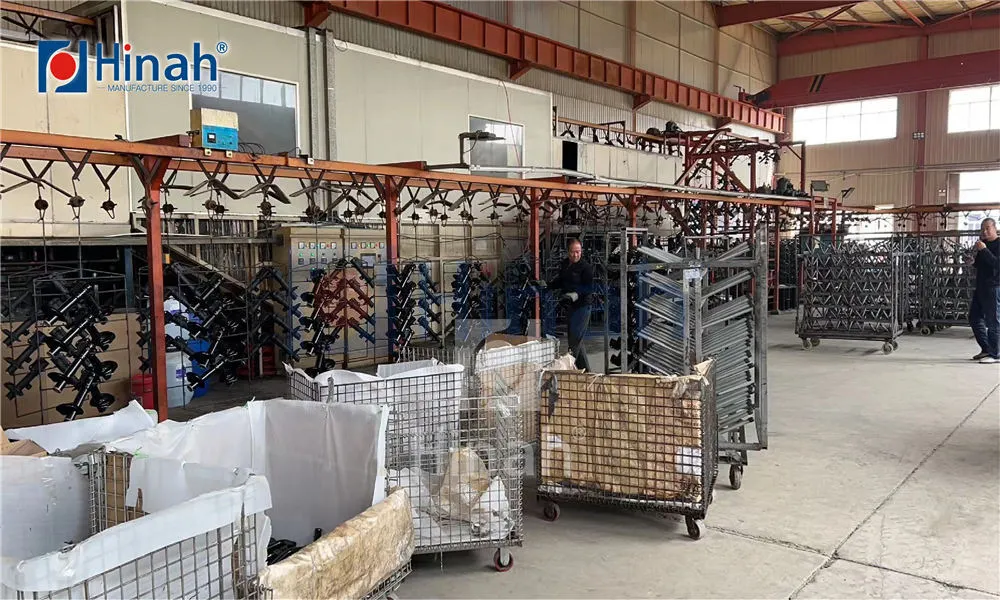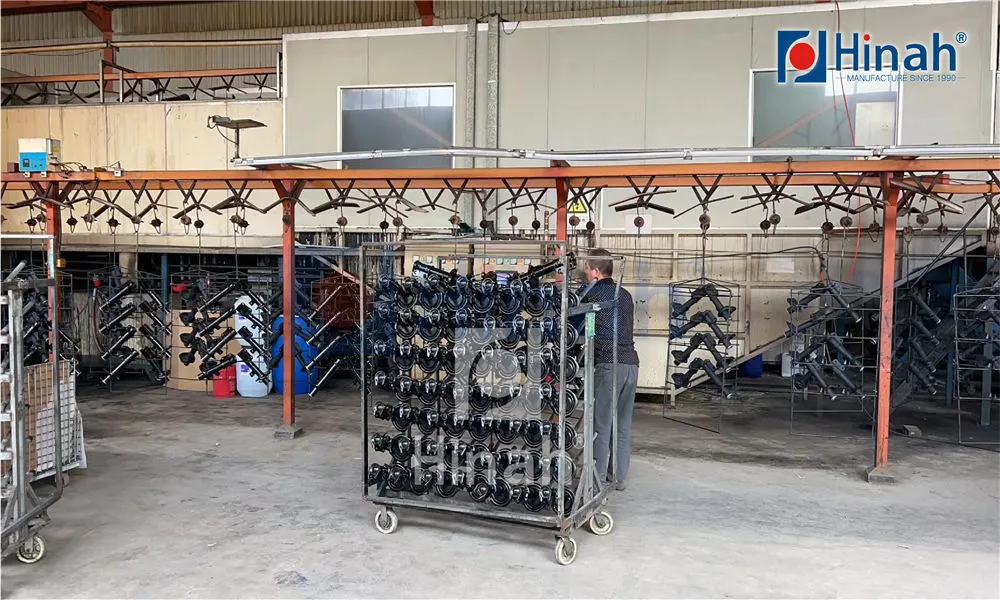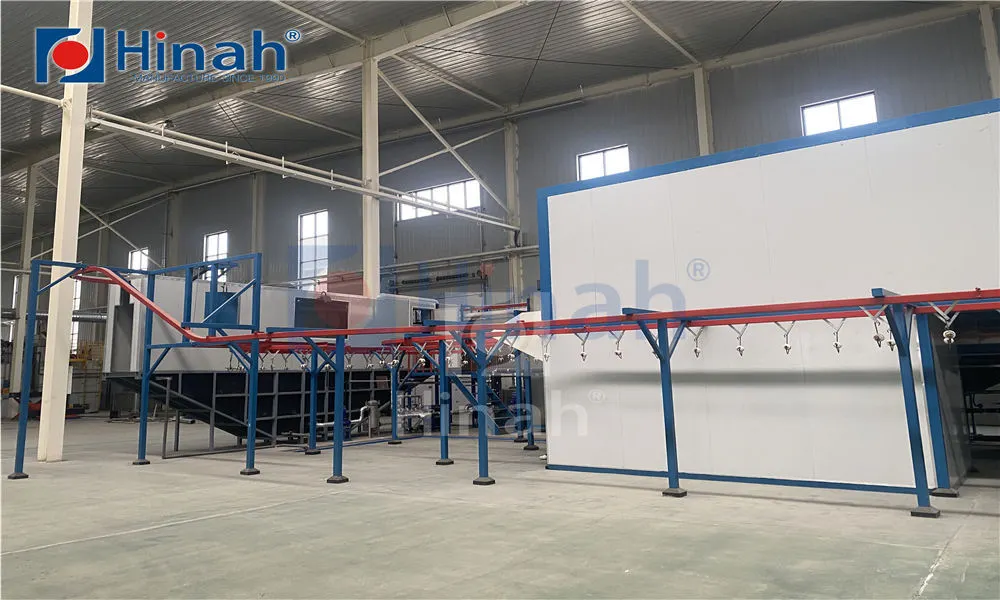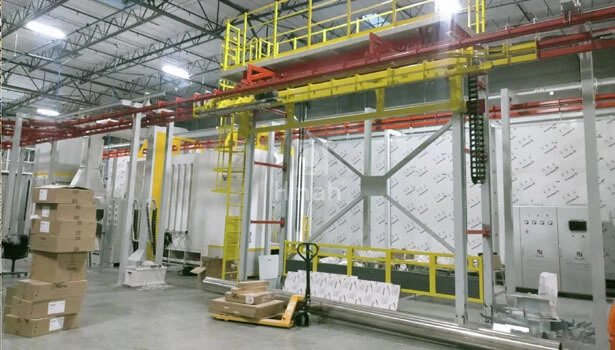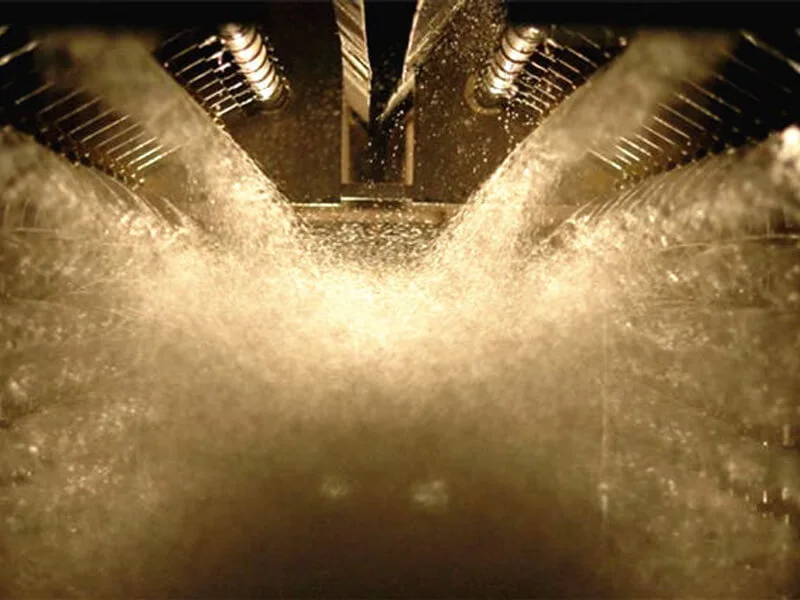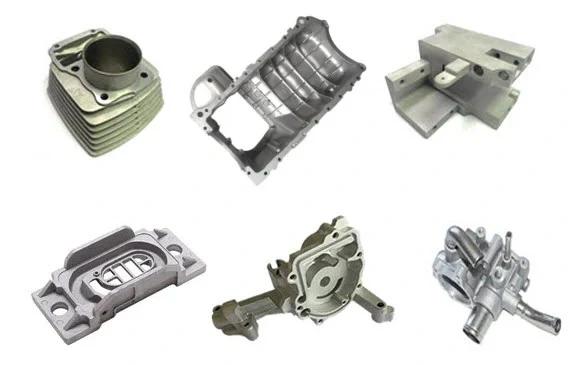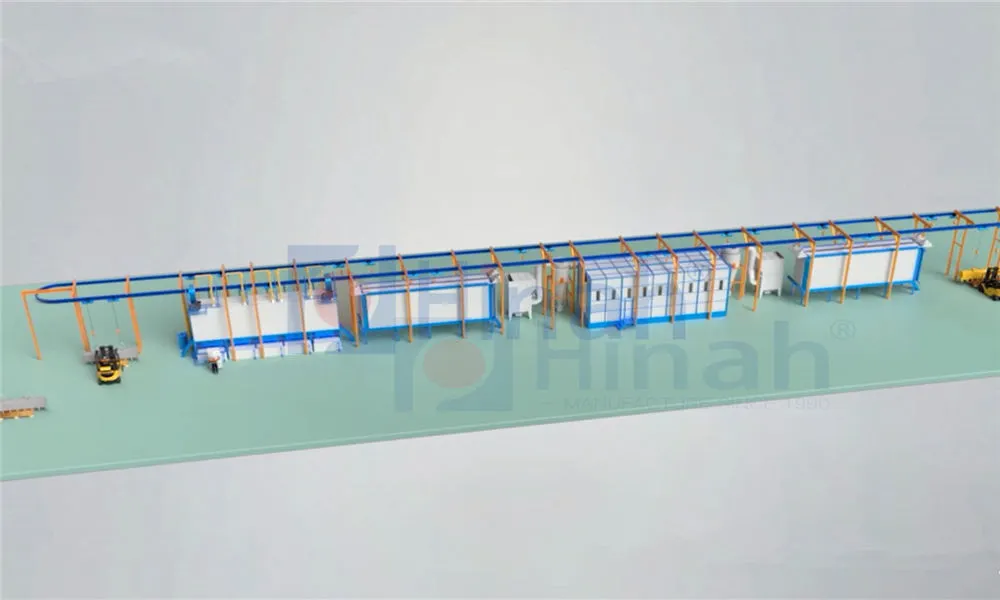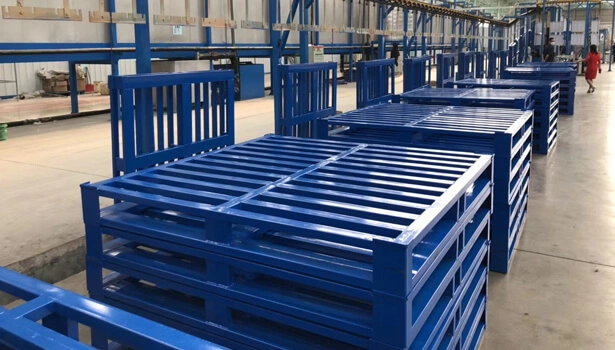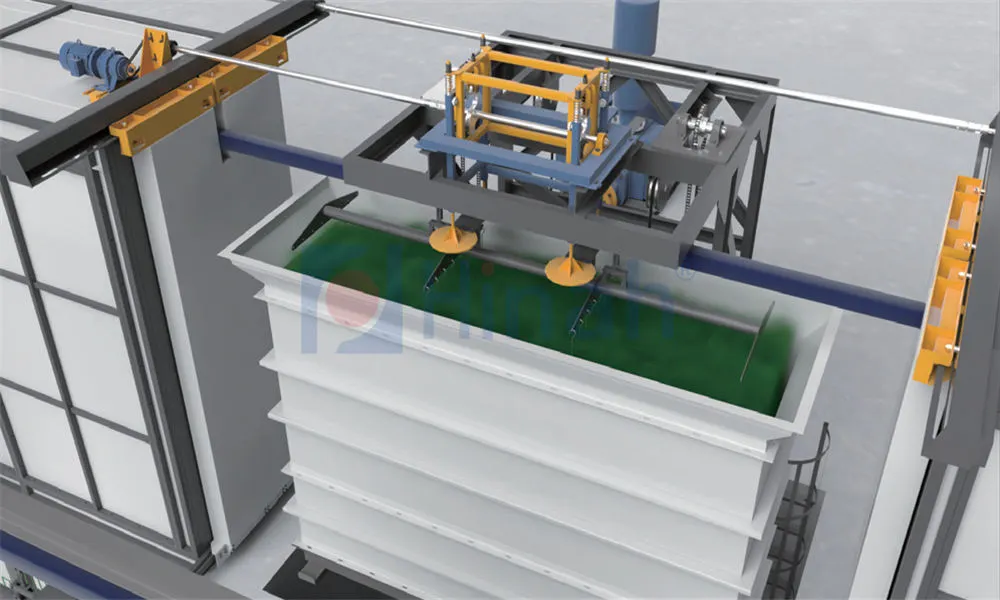Understanding E-Coating: The Science Behind the Process
E-coating, short for electrophoretic coating or electrodeposition coating, is an immersion process that utilizes electrical current to deposit paint uniformly onto metallic substrates. In the context of an Automotive Parts E-Coating Line, this process is specifically engineered for the high-volume, high-quality demands of vehicle part production.
The core principle is straightforward yet powerful:
Electrolysis: Parts are immersed in a water-based paint bath containing charged paint particles (either anodic or cathodic).
Electrophoresis: When an electrical current is applied (DC voltage), the charged paint particles migrate towards the oppositely charged part.
Electrodeposition: The paint particles deposit onto the part's surface, forming an initial, continuous film.
Coagulation & Film Formation: The deposited film coalesces and de-waters at the part's surface, building thickness until the insulating film halts further deposition.
The dominance of cathodic e-coat in modern Automotive Parts E-Coating Lines is due to its superior corrosion resistance. Here, the part acts as the cathode (negatively charged), attracting positively charged paint particles. This results in a highly uniform, non-porous film that provides exceptional barrier protection against rust and corrosion – a fundamental requirement for automotive longevity.
The Step-by-Step Journey Through an Automotive Parts E-Coating Line
A typical Automotive Parts E-Coating Line is a complex sequence of precisely controlled stages, often spanning hundreds of meters. Each step is crucial for achieving optimal coating performance:
Pre-treatment (Cleaning & Conversion Coating): Parts arrive coated in oils, grease, dirt, rust, and scale. This stage involves:
Alkaline Cleaning: Removes organic soils and oils.
Rinsing: Multiple stages (often hot and cold water rinses) remove cleaning chemicals.
Surface Activation (Optional for some metals): Prepares the surface.
Conversion Coating (Phosphating or Zirconium): Creates a micro-crystalline layer that significantly enhances corrosion resistance and promotes e-coat adhesion. This is arguably the most critical step for long-term performance. Thorough rinsing follows each stage.
DI Water Rinse: A final deionized (DI) water rinse ensures no contaminants enter the e-coat bath and provides a clean surface.
E-Coat Bath Immersion: Pre-treated parts are immersed in the large e-coat tank. A specific DC voltage is applied for a predetermined time (dwell time), controlling film thickness. Continuous bath circulation, filtration, and ultra-filtration (UF) maintain bath chemistry, remove contaminants, and manage drag-out.
Post Dip Rinses (UF Rinse & DI Rinse): As parts exit the bath, excess coating is recovered using ultrafiltrate (UF permeate) rinses. This minimizes paint waste (drag-out) and recovers valuable coating material back into the main tank. A final DI rinse ensures surface cleanliness.
Drain Station: Allows excess rinse water to drip off the parts.
Bake Oven (Curing): The deposited e-coat film is initially wet and uncured. Parts pass through multi-zone ovens (typically convection or IR) where controlled heat causes cross-linking (curing) of the paint resin. Temperatures usually range from 160°C to 190°C (320°F to 375°F) for 15-30 minutes, depending on the specific coating chemistry. This step is vital for achieving the coating's final hardness, adhesion, and chemical/corrosion resistance properties.
Cooling: Parts exit the oven and are cooled, often using ambient air, before moving to subsequent processes like primer or topcoat application, or assembly.
Why E-Coating Reigns Supreme: Key Benefits of Automotive Parts E-Coating Lines
The widespread adoption of Automotive Parts E-Coating Lines is driven by compelling advantages over alternative coating methods:
Unmatched Corrosion Resistance: The ability to form a continuous, uniform, pore-free film, even on complex geometries and recessed areas (like box sections and seams), provides exceptional long-term protection against rust and corrosion. This directly translates to longer vehicle lifespans and reduced warranty claims. Meeting standards like GMW14872 is paramount.
Superior Uniformity & Coverage: Electrodeposition inherently coats all electrically conductive surfaces immersed in the bath. This ensures consistent thickness and complete coverage, including edges and areas notoriously difficult to coat with spray methods (e.g., inside door sills, chassis cavities). This eliminates thin spots prone to early failure.
Excellent Adhesion: The combination of meticulous pre-treatment and the electrochemical deposition process creates a strong chemical and mechanical bond between the coating and the metal substrate.
High Material Utilization & Low Waste: E-coat systems boast transfer efficiencies exceeding 95%. The closed-loop design, with UF rinse systems capturing and recycling drag-out, minimizes paint waste and VOC emissions compared to spray processes. This reduces environmental impact and operating costs.
Automation & Efficiency: Automotive Parts E-Coating Lines are highly automated, designed for continuous, high-volume production. Parts are typically racked and processed on conveyors, enabling consistent results with minimal manual intervention.
Safety & Environmental Profile: Modern e-coats are primarily water-based, significantly reducing solvent content (VOCs) compared to traditional solvent-borne paints. The closed bath system also minimizes operator exposure to paint mists.
Smooth Substrate for Topcoats: The cured e-coat film provides an exceptionally smooth, uniform surface, ideal for the subsequent application of primer, basecoat, and clearcoat, enhancing final appearance and quality.
Critical Components and Substrates Coated on Automotive E-Coating Lines
The Automotive Parts E-Coating Line processes a vast array of components, forming the protective foundation for the entire vehicle:
Body-in-White (BIW): The complete vehicle body shell (unpainted structure) is the single largest and most critical component processed. This includes panels, pillars, roof, floor pan, doors, hoods, and deck lids – essentially the entire structural skeleton.
Chassis & Frame Components: Critical structural parts like cross members, suspension components (control arms, knuckles), brackets, and subframes.
Closures: Doors, hoods, liftgates, and tailgates.
Smaller Structural Parts: Reinforcements, bumper beams, seat frames, and various brackets.
Substrates: Primarily steel (cold rolled, galvanized, Galvannealed) and aluminum alloys. Modern lines must be capable of handling mixed-metal assemblies effectively. The pre-treatment process is tailored to the specific metals being coated.
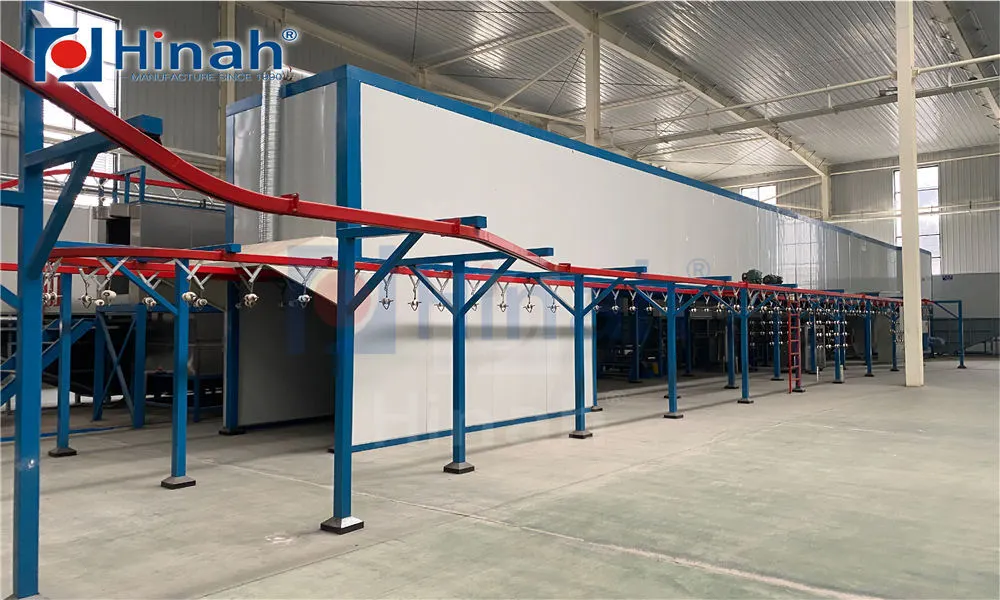
Ensuring Peak Performance: Control, Maintenance & Challenges in E-Coating Lines
Operating a high-performance Automotive Parts E-Coating Line requires constant vigilance and sophisticated control:
Bath Parameter Control: Critical bath parameters must be continuously monitored and tightly controlled:
Solids Content: Concentration of paint solids in the bath.
pH: Acidity/Alkalinity level.
Temperature: Affects viscosity and deposition characteristics.
Conductivity: Measures ion concentration.
Pigment-to-Binder Ratio (P/B): Influences film properties.
Acid/Base Content (MEQ): Measures the concentration of neutralizable groups.
Voltage & Amperage: Directly control film build and deposition rate. Automated controllers adjust voltage based on the total surface area being coated at any time.
Ultrafiltration (UF) System: The heart of bath health and material recovery. UF membranes must be maintained to ensure proper permeate flow for rinsing and contaminant removal. Regular cleaning (CIP - Clean In Place) is essential.
Anode/Cathode Management: Anodes (in cathodic systems) require periodic maintenance or replacement. Proper membrane integrity is crucial.
Pre-treatment Control: Maintaining the concentration, temperature, and contamination levels in cleaning and phosphating/zirconium stages is foundational to e-coat adhesion and performance.
Oven Profiling: Ensuring the correct temperature profile (time vs. temperature) throughout the oven is critical for complete cure without under-baking (poor properties) or over-baking (brittleness, discoloration).
Racking & Jigging: Parts must be securely racked to ensure good electrical contact, prevent shielding (Faraday cage effects), allow proper drainage, and minimize bath contamination. Rack maintenance and stripping are ongoing tasks.
Key Challenges:
Managing Faraday Cage Effects: Achieving adequate coating thickness inside deep recesses or box sections requires specialized racking or auxiliary anodes.
Edge Coverage: While excellent, maintaining sufficient film build on sharp edges requires bath chemistry optimization and process control.
Contamination Control: Preventing oils, phosphates, or other contaminants from entering the bath is paramount. Robust pre-treatment rinsing and UF are critical defenses.
Bath Stability: Maintaining consistent bath chemistry over time with continuous production requires sophisticated monitoring and replenishment systems.
Energy Consumption: The bake ovens represent a significant energy demand; optimizing oven efficiency is a constant focus.
Innovation and Future Trends in Automotive E-Coating
The evolution of the Automotive Parts E-Coating Line continues, driven by demands for sustainability, performance, and cost-effectiveness:
Higher Performance Coatings: Development of e-coats with enhanced chip resistance, higher edge coverage, improved UV resistance (for exterior applications), and compatibility with newer, lighter substrate materials.
Sustainability Focus:
Lower Cure Temperatures: "Low-bake" or "low-energy" e-coats reduce oven energy consumption significantly.
Reduced Heavy Metals: Phasing out lead and other heavy metals traditionally used in corrosion protection.
Process Efficiency: Innovations in UF systems, bath monitoring, and recovery technologies to further minimize waste, water usage, and energy.
Zinc-Free Pre-treatment: Advancements in zirconium and other non-phosphate conversion coatings.
Digitalization & Industry 4.0: Increased use of sensors, real-time data analytics, and AI for predictive maintenance, process optimization, and quality assurance throughout the e-coating line.
Compatibility with Multi-Material Designs: As vehicles incorporate more aluminum, magnesium, and composites, e-coat formulations and processes are adapting to ensure consistent performance on mixed-material assemblies.
Improved Application Efficiency: Research into pulsed voltage deposition and other techniques for even greater control over film build and penetration.
Conclusion
The Automotive Parts E-Coating Line is far more than just a paint tank; it is a highly sophisticated, integrated chemical and electrochemical processing system fundamental to modern vehicle manufacturing. Its ability to deliver unparalleled corrosion protection, uniform coverage on complex parts, high material efficiency, and a superior base for subsequent coatings makes it indispensable. While demanding in terms of control and maintenance, the benefits it provides in terms of vehicle durability, safety, quality, and longevity are immense. As automotive materials and environmental standards evolve, so too will the technology and operation of the Automotive Parts E-Coating Line, ensuring it remains the bedrock of corrosion protection for the vehicles of today and tomorrow. Investing in understanding and optimizing this critical process is essential for any automotive manufacturer or supplier aiming for excellence.


